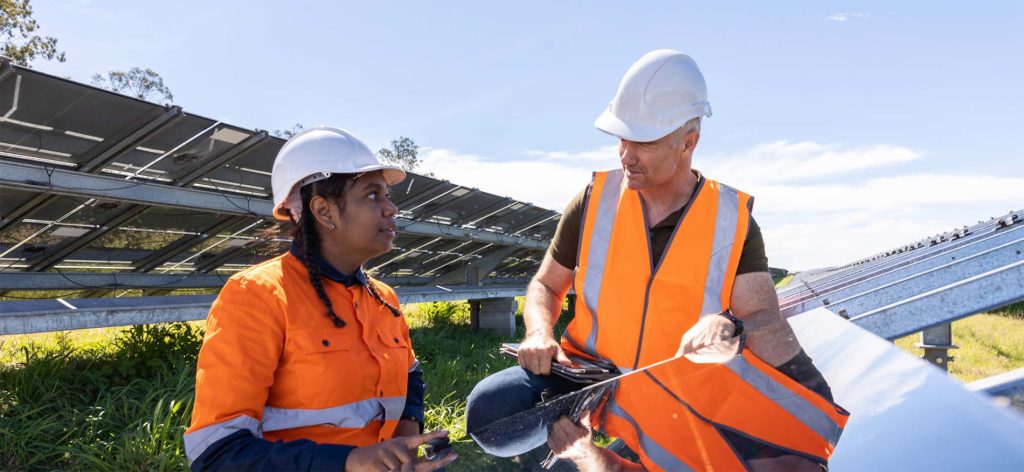Insights on infrastructure’s labour market 2022-2025; An industry snapshot series
In continuation of our recent analysis of Australia’s unemployment and recruitment trends, we dived deeper into trends specifically related to the infrastructure industry. A quick summary of the current infrastructure recruitment trends: SEEK job ads in the construction sector grew by 21.1% between February 2022 and April 2022, whilst ads in the engineering sector grew…
In continuation of our recent analysis of Australia’s unemployment and recruitment trends, we dived deeper into trends specifically related to the infrastructure industry.
A quick summary of the current infrastructure recruitment trends:
- SEEK job ads in the construction sector grew by 21.1% between February 2022 and April 2022, whilst ads in the engineering sector grew by 30.6% between March 2022 and May 2022
- Candidate availability is low across all infrastructure sectors
- Demand for labour in the infrastructure industry is predicted to be over two-thirds greater than in the previous five years
- Demand for infrastructure labour will be 48% higher than supply in 2023
- Civil Engineering was one of the top 10 growing occupation groups reported by Indeed, with a 22% increase between March and June 2022
As previously stated in our update on unemployment and recruitment trends, candidate shortages will continue in Australia for another two years before labour market conditions improve for employers. In addition to the candidate short market, there are labour challenges specific to the infrastructure industry that businesses should consider when planning their workforce. If you’d like advice tailored to your business, reach out to our specialist recruiters here .
Increasing investment in public infrastructure fuels labour shortages
Over the next five years, investment in public infrastructure will reach record levels, exceeding $218 billion. As a result, demand for labour in the sector is expected to be over two-thirds greater than in the previous five years, and it will account for over 60% of resource demands in the industry. At its peak, demand for labour will be 48% higher than supply.
Shortages will be most prominent across engineering positions, and roles that require a high level of technical specialty. Whilst shortages will not be as heavily felt in general labour roles, there will be shortages in specialist labour positions, for example, pipefitters and maintenance plumbers. It is estimated that at its peak, there will be a deficit of:
- 70,000 engineers, scientists, and architects
- 15,000 structural and civil trades
- 19,000 project management professionals
According to the National Skills Commission, jobs that will experience the highest growth are those in science, technology, engineering, and maths (STEM). These are projected to grow at 12.9%, more than twice as fast as non-STEM occupations, which will see a growth rate of 6.2%. The occupation groups that will see the highest growth are professionals (14.7%) and managers (9.2%), whilst labourers and technicians & trades will see lower growth at 6.9% and 6.1%, respectively.
With this in mind, businesses should improve or tailor their attraction strategies to win talent for their engineering, professional and management positions over their competition.
The aging population and its impact on the infrastructure industry
Workers in the infrastructure industry tend to retire young due to the nature of the roles. As a result, the impacts of an aging population are exacerbated in the industry. It is predicted that over 40% of the sector’s labour force will be lost due to early retirement over the next 15 years. Ensure that your business prepares for this through a pipeline of young talent.
Older workers are more likely to fill technical, specialist and senior roles, which are in highest demand. Specifically, project management roles are at the greatest risk, with over half of the workforce aged over 45 years old. Training investment in your workforce will be critical over the next three years, to be able to upskill your existing employees as senior staff members retire.
Diversifying the workforce to overcome labour shortages
The construction industry is the most male-dominated industry in Australia, with women currently accounting for only 12.7% of the workforce. The imbalance is worse in trade jobs, where only 2% of employees are women. The disparity is a result of insufficient pathways for women into the construction industry, and a lack of focus on retention strategies for women.
Addressing the gender imbalance in the infrastructure industry will aid your business to overcome labour shortages over the next three years. To source women into your business, invest in the training of female new starters, and take advantage of government programs that are designed to increase female participation in the construction industry. To retain women in your organisation, ensure that your workplace is free of gender stereotypes and biases, and your work sites host the appropriate facilities for your female workers.
If you’d like to discuss the infrastructure labour market in further detail with one of our specialist consultants, fill out the form on this page and we’ll be in touch.
Sources: Hiring Lab, July 2022 Australian Labour Market Update: Not Slowing Down Yet, 2022; Infrastructure Australia, Infrastructure Market Capacity, 2021; Australian Chamber of Commerce and Industry, Overcoming Australia’s Labour and Skills Shortages, 2022; National Skills Commission, Projecting employment to 2025, 2022; SEEK; SEEK Industry Insights Construction, 2022; SEEK; SEEK Industry Insights Engineering, 2022;







